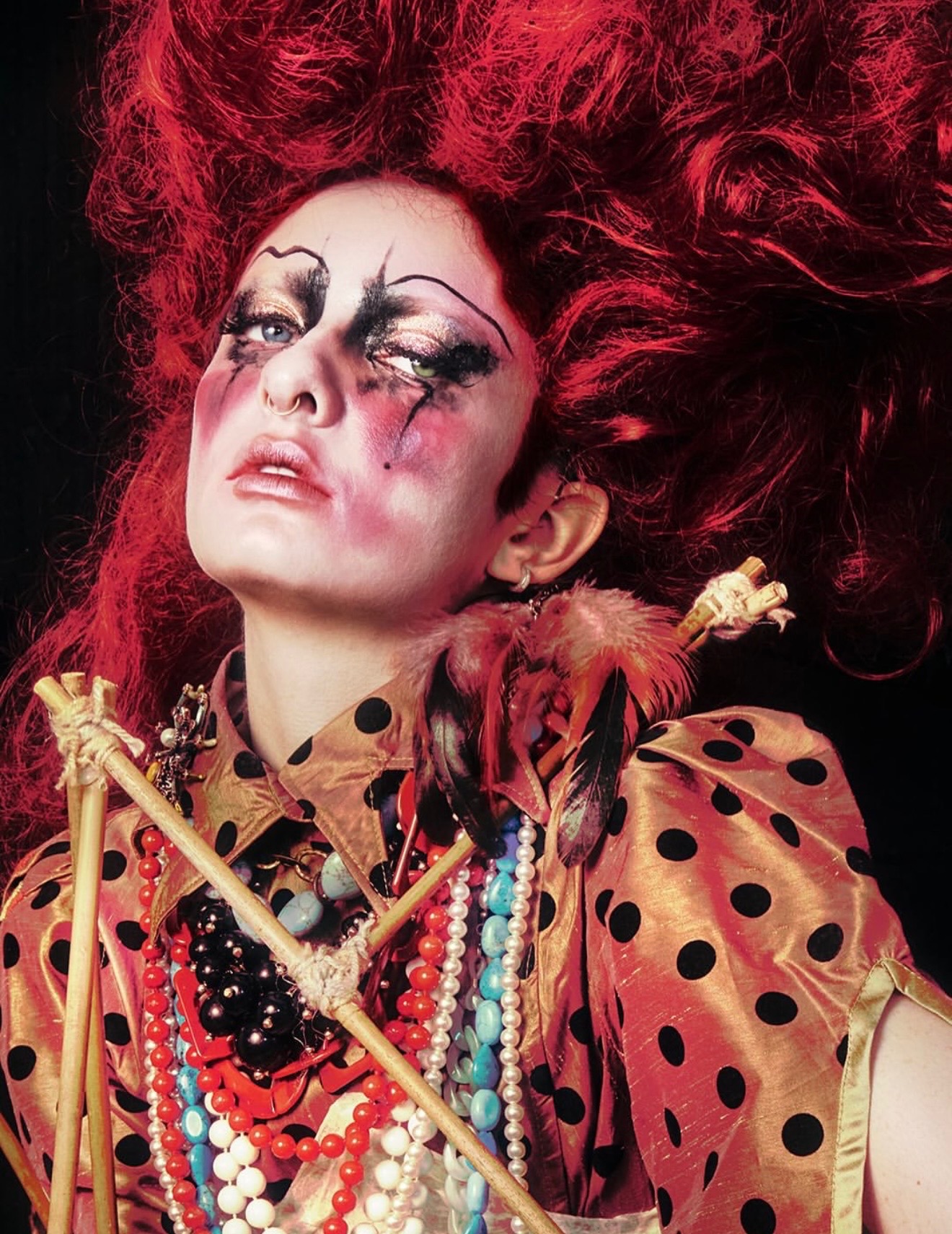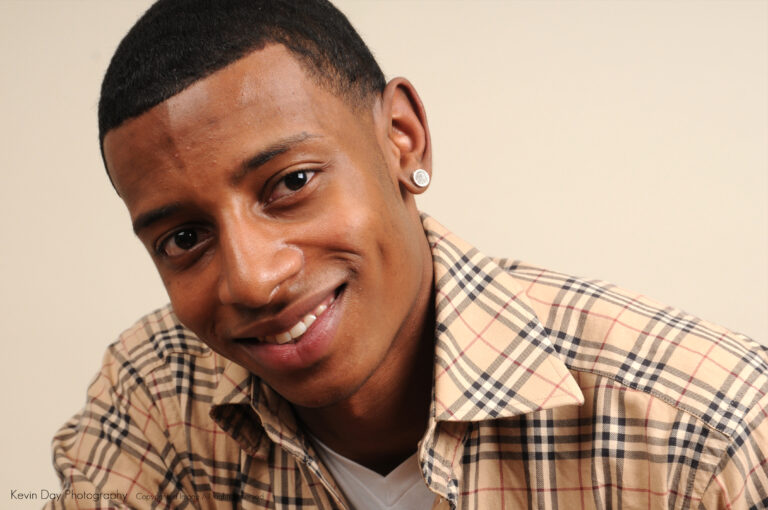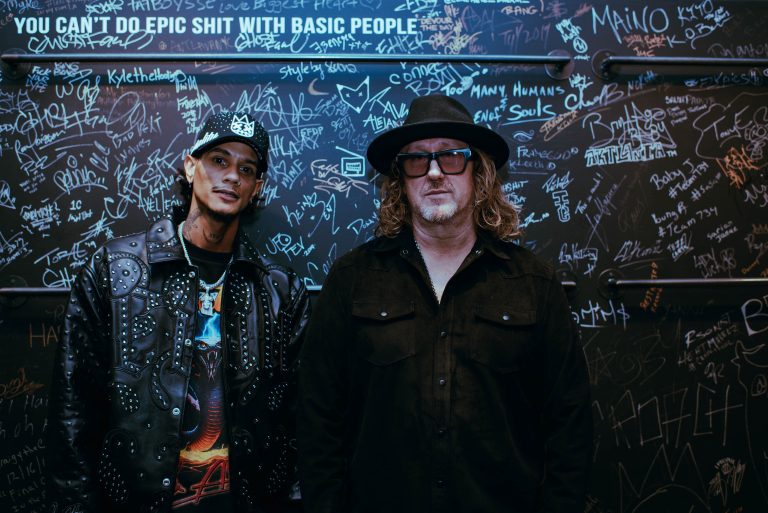NYC based -and Nantucket native- Madeline Malenfant isn’t just designing clothe; she’s reconstructing history through an artist’s mind.
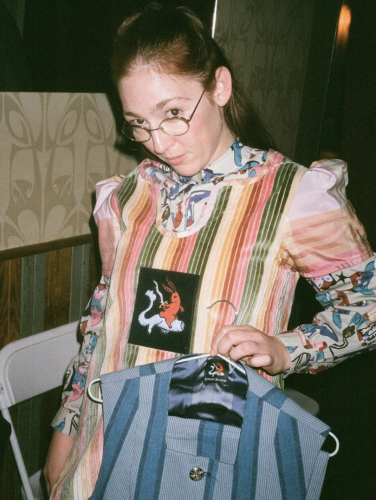
The Artist Before the Designer
Before she ever touched a bolt of fashion fabric, Madeline was trained to think like a sculptor.
At Sarah Lawrence College, she immersed herself in sculpture, often working with concrete but instinctively reaching for softer materials—textiles, fabrics, even upholstery—whenever she could.
After graduation, the realities of a tiny Brooklyn apartment made heavy sculpture impractical.
Stone and plaster had no place in her walk-up, so she turned to knitting, stitching, and textile experiments small enough to fit comfortably in her city home. What began as a practical necessity soon became an artistic awakening.
Knowing she wanted to remain in New York and pursue a life in the arts, Madeline started considering how she might support herself creatively. She remembered a college project where she made a “horrific” bedsheet costume—and realized she could, in fact, operate a sewing machine.
That tiny revelation sparked a domino effect of possibility: If I can sew, I can make clothes. If I can make clothes, I can sell them. And if I can sell them, I can make a living.
Despite having no formal sewing training, she felt drawn toward fashion, and her improvised experiments laid the groundwork for her shift from traditional sculpture to wearable art.
The transition also shifted her creative priorities: she began moving away from the conceptual humor of her sculptural works toward something more beautiful and heartfelt.
“What I like about clothing,” she explains, “is that it can be really pretty and it can also mean something. I was having trouble marrying those two when I was doing sculpture.”

The Pull of the Past
Madeline’s fascination with history soon began stitching itself into her design sensibilities.
Studying abroad in London deepened her interest in centuries of costume design and archival garments. She became captivated by Renaissance silhouettes and the craftsmanship of earlier eras—forms that felt both dramatic and deeply human.
That historical instinct also echoes her upbringing on Nantucket, where preservation is woven into everyday life and beauty often lies in what endures.
When imagining the designers she’d most like to learn from, she cites Edith Head—the Hollywood costume legend whose precision shaped generations of film—and dreams of meeting the late Vivienne Westwood, whose rebellious reimagining of the past mirrors Madeline’s own sensibility.

Pressure and Identity on Project Runway
Stepping onto the Project Runway stage thrust Madeline into a world utterly unlike her quiet, deliberate studio practice. She describes herself as a fish out of water. The show’s relentless pace—timed challenges, group dynamics, high-stakes eliminations—pushed her to design faster than ever, leaving little time to breathe, let alone second-guess.
“I think a person needs just a little bit of time in between each creative project,” she says.
“Especially when they’re so high-stress and so quick. I needed just slightly more time. The respite is important, you know?”
But amid the chaos, she found an unexpected lesson: sometimes success isn’t about perfection—it’s simply about showing up.
“It was definitely about showing up,” she says. “I struggled to want to do it, being completely honest. I’m really grateful for the opportunity, but it was really out of my comfort zone. I know I didn’t get that far, but I got as far as I imagined myself getting. And I was really ready to leave when I left.”
In its own way, the experience reaffirmed her ability to trust her instincts and stay aligned with her creative rhythm—even under pressure. For Madeline, the show became less about winning or losing and more about proving she could remain true to her vision while surrounded by noise.
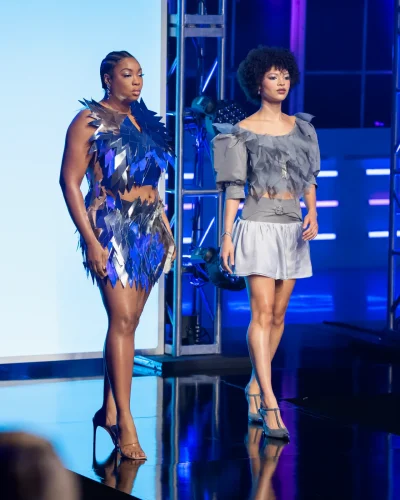
Designing Against the Grain
Madeline’s design philosophy is unapologetically avant-garde. Even in the face of market pressures to simplify or streamline her work, she remains committed to making clothing that is both meaningful and beautiful—garments that tell a story rather than merely sell.
Legacy and Leadership
For Madeline, success isn’t measured solely by recognition or sales—it’s also about the kind of designer and leader she hopes to become. She imagines a future studio defined by fairness, kindness, and integrity, a place where creativity thrives and people feel valued.
Financial stability matters only as the foundation that allows her to keep making work with intention and care.
Her long-term vision reflects her deep love of history and craft. She hopes to continue exploring mid-century fashion—particularly the 1950s—with an eye toward eventually diving into the playful style of the ’60s and ’70s.
Those decades also connect to her personal style: if you watched her on Project Runway, you know she has a particular fondness for pants.
“I love pants,” she says, laughing. “I’ve never been a bellbottoms girl, but I feel like my time is near.”
In the end, leaving a mark in fashion isn’t about chasing trends for her—it’s about creating work that endures, both in beauty and in impact.
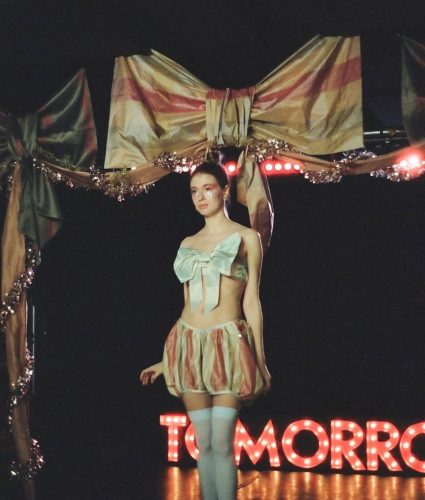
Finding Home at Café Forgot
Madeline’s relationship with Café Forgot didn’t begin as a business arrangement it began as an aspiration, almost a daydream. She followed the store from its earliest days, long before launching her brand.
“I had been a long-time fan of the store,” she says, “and it was always a dream of mine to have my clothes in their shop.”
Reaching out after her first runway show in 2021, she still wasn’t convinced she was ready. “It was one of those dreams that felt out of reach for some reason.”
But Café Forgot saw her clearly. One of the rare retailers championing small designers and one-of-a-kind work, they gave her garments a home—and gave her the confidence of visibility.
“They take something super bespoke and make it look super professional,” she explains. “Which is just what I needed at the start—and still need.”
Selling through the store grounded her at a moment when she was still stitching pieces from her Brooklyn bedroom.
“People really trust them,” she says. “So if a designer is selling there, they’re seen as good, successful, reliable… even if they’re still working out of their bedrooms.”
She even believes they helped pave her path to Project Runway. “I don’t think I would have been cast if it weren’t for them,” she says.
“I feel like I owe them everything I’ve built.”
Three years later, the partnership has become one of her most cherished. Some of her favorite concepts are the Halloween collections she created exclusively for the shop—a surprising joy for someone who “famously dislikes Halloween.”
Making capital-C Costumes, she explains, lets her release the worry that her clothes might lean too far into theatrics: “Being tasked with actually making costumes lets me really let go for a moment.”

A Wacky, Upholstered Future: Boston Bound for The Runway Ball
Now, preparing for Season 3 of The Runway Ball -December 14th in the Grand Ballroom of the historic Hilton Boston Park Plaza- Madeline is buzzing with excitement to be one of the six designers selected to be showcased at New England’s most prestigious fashion gala. She is thrilled not just to reveal the pieces, but to talk about them.
“Talk about them, then show them,” she jokes.
This collection revisits one of her oldest obsessions: upholstery fabrics. Not the glamorous kind—the forgotten kind.
“Think of a dentist’s waiting room chair,” she says. “An ignored couch at Goodwill. The bedspread and curtains at a lower-tier Best Western. Maybe even the upholstery on the Plymouth and Brockton bus.”
To her, these prints are both repulsive and irresistible: “These fabrics are… so ugly and then again quite remarkable.”
For the show, she deliberately sourced what she calls “the ugliest fabrics I could justify purchasing” -heavy-duty materials with busy geometrics, muddy colors, and patterns designed to endure decades and disguise stains. Her challenge—and her delight—is transforming them into something unexpectedly beautiful.
“My goal is to make these confusing fabrics into something pretty, and to help you forget that they’re, in a way, very ugly,” she explains.
This playful tension between nostalgia, oddity, and reinvention has her looking to the designers who shaped her childhood lens: 90s-era Dior, Betsey Johnson, Moschino, D&G. This show, she says, will be “a little more wacky, a little more runway” than her last.
“By saying all this I’ve promised a lot,” she says with a laugh. “Hopefully I’ll be able to communicate ten percent of what I’m describing. Apologies in advance if you don’t find the fabrics ugly—maybe that means I’ve done my job.”

For tickets to see Madeline Malenfant showcased at Boston’s 3rd Annual Runway Ball on December 14th at Hilton Boston Park Plaza, please click HERE.

